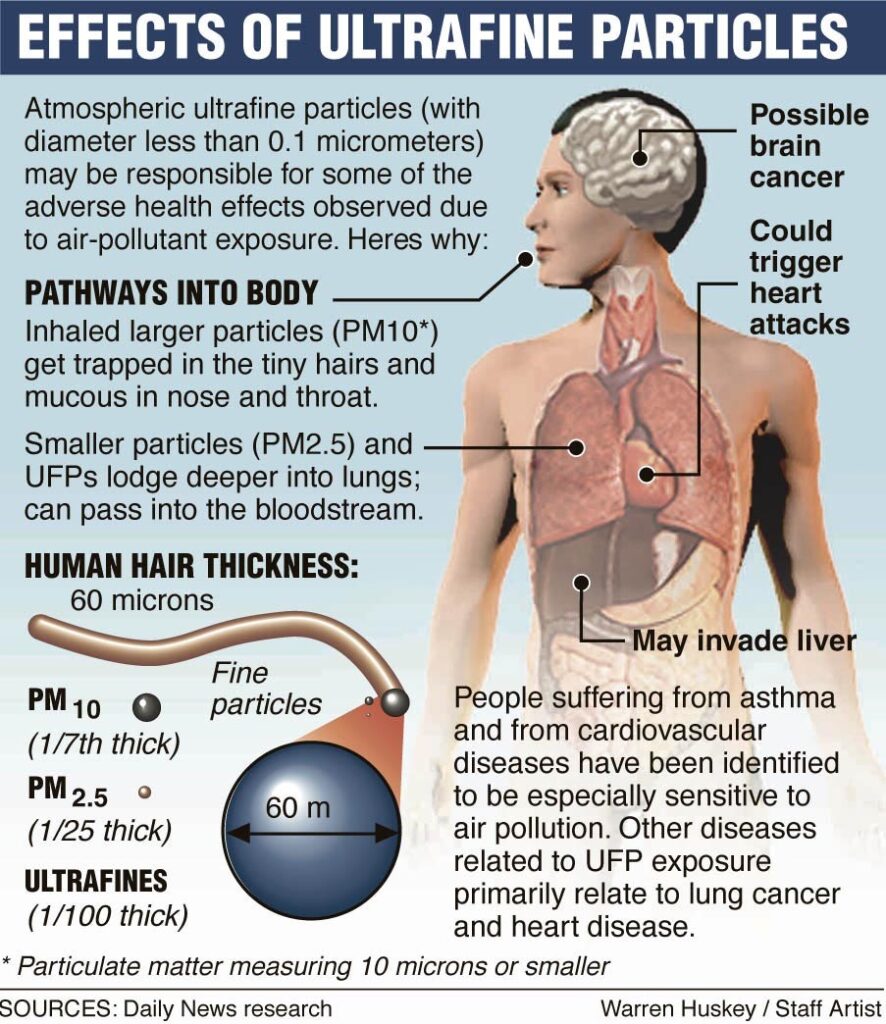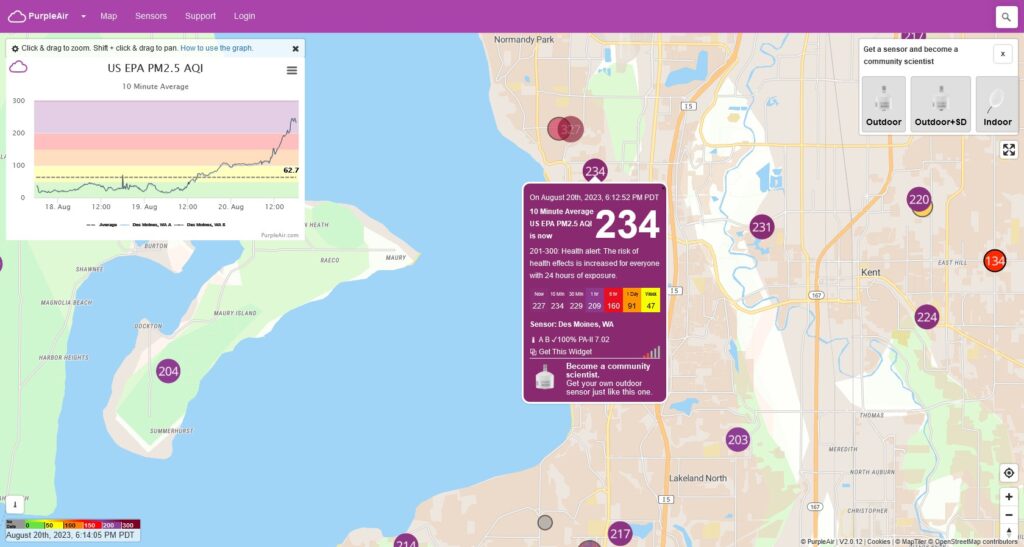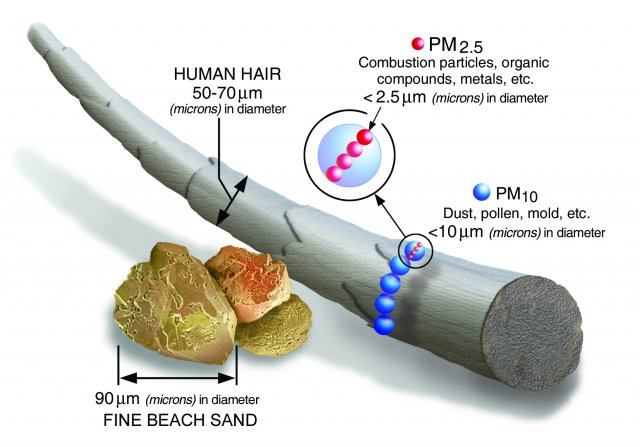Limit your exposure to particulate matter. Limit your cumulative risk.
The smoke from wildfires has once again blanketed the areas around Sea-Tac Airport, creating PM2.5 air quality readings often seen more in Third World countries.
Unfortunately, most of us are highly biased to only perceive dangers we can see. For example, many of you will see the ‘enhanced’ air and immediately be drawn to go outside and bask in the beautiful sunset.
So perhaps this is a teachable moment.

Particles are solids…
Both wildfire smoke (which you can see) and aviation emissions (which you can’t see) contain particles. That is why they are referred to as particulate matter. Duuhhh. 😀
Sorry, but we feel a need to emphasize that particulates are not gases like C02, which you breathe in and then breathe out. Particles are solids, like grains of sand, except much tinier.
You breathe in the particles and they tend to stay in your body. They collect in your lungs and then can find their way into your bloodstream. And (this is important) the smaller the particles, the more likely they are to migrate to organs like your brain.
That is why you’ll often hear health professionals refer to ‘cumulative exposure’. That means the gradual build up of all those particles in your lungs and blood and the rest of your body over time.
The reason to stay indoors (with an air purifier), or wear an N95 mask if you head outdoors, is to avoid getting those particles into your body. What you’re trying to avoid is adding to that total.
We understand that the smoke makes for beautiful sunsets, but this is of real concern for people with health problems and especially for children.

Cumulative exposure…
Think of cumulative exposure a bit like putting money into a really bad bank account. Every time your child is exposed to this stuff their balance increases–and there are no withdrawals. You want to minimize their exposure because not only is the brain more susceptible to injury during those developmental years, again, the particles stick around in the body. Without some form of filtration, the earlier in life the exposure begins, the greater the cumulative exposure. And the greater the cumulative exposure, the greater the risk of various long term health problems.
More Years = More Exposure = Greater Lifetime Health Risk
Recommendations
So, again, we know the sunsets are totally awesome. But please. When the PM2.5 count is elevated consider:
- Stay indoors
- Get an air purifier
- If you go outside, wear a rated KN95 mask
And remember: these recommendations are also not a bad idea the rest of the year due to the ultra-fine particulates (UFPs), which you also cannot see. At a minimum, we believe that every home under the flight path should have an AHAM certified air purification system.
UFPs are found at elevated levels at least five miles from the control tower. There is strong evidence that they may present an equal or greater health risks than PM2.5s. The smaller the particle, the easier it seems to be at infiltrating the most vulnerable parts of the body.

Moving Beyond Mitigation
We don’t want people to over-react, but this is what the data currently suggests–which is why we are so passionate about developing permanent air quality monitoring around Sea-Tac Airport. As we keep saying, rigorous data collection is the key to regulating these pollutants–which is why so many people who say they are our allies have slow walked this essential aspect of public health for so many years. If you really want to help, that’s the long game.
For now the only sure way to limit your cumulative risk is to limit your cumulative exposure.

